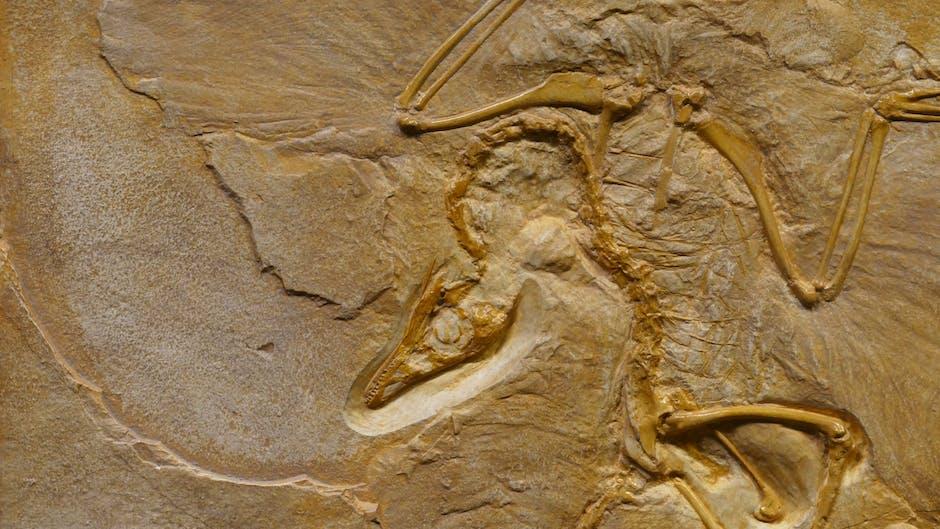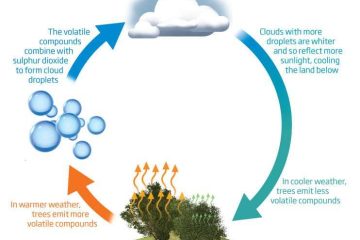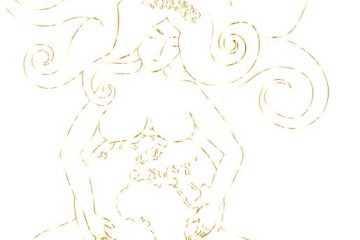In the vast tapestry of scientific theories that seek to unravel the mysteries of our planet’s intricate ecosystems, one concept stands out as both profound and controversial – the Gaia hypothesis. Emerged from the depths of ecological thought, the origins of this hypothesis are shrouded in a veil of complexity, weaving together notions of interconnectedness and symbiosis in a way that challenges traditional scientific paradigms. Join us on a journey to uncover the enigmatic beginnings of the Gaia hypothesis and explore the fascinating landscape it has carved in the realm of Earth science.
Table of Contents
- Unpacking the Genesis of the Gaia Hypothesis
- Exploring the Key Contributors to Gaia Theory
- Evolution and Influence of the Gaia Hypothesis
- Implementing Gaia Principles for Sustainable Living
- Q&A
- Key Takeaways

Unpacking the Genesis of the Gaia Hypothesis
The Gaia Hypothesis, a captivating concept in ecological science, proposes that the Earth functions as a self-regulating system to maintain environmental conditions suitable for life. Originating from the mind of scientist James Lovelock in the 1970s, this idea revolutionized the way we perceive our planet. The hypothesis suggests that the Earth’s biosphere, atmosphere, oceans, and rocks interact in a complex and interconnected manner, forming a unified, self-regulating entity that supports life.
This groundbreaking theory challenges traditional views of the Earth as a passive backdrop to life and instead presents it as an active, living organism in its own right. Through intricate feedback mechanisms and cycles, Gaia maintains conditions hospitable for the diverse array of life forms that call our planet home. By delving into the origins and evolution of the Gaia Hypothesis, we gain a deeper appreciation for the interconnectedness of all living and non-living components of the Earth system in a harmonious dance of existence and balance.
Exploring the Key Contributors to Gaia Theory
Delve into the intriguing genesis of Gaia Theory by exploring the key contributors who shaped its foundations. From the visionary mind of James Lovelock to the influential research of Lynn Margulis, the origins of this holistic ecological concept are woven with diverse perspectives and trailblazing ideas.
Witness how Lovelock’s pioneering hypothesis intertwined with Margulis’s symbiotic theories to form a paradigm-shifting view of Earth as a self-regulating organism. Their collaboration birthed a profound understanding of the interconnectedness between living organisms and the planet, igniting a revolutionary perspective on the delicate balance of nature.

Evolution and Influence of the Gaia Hypothesis
The Gaia Hypothesis, proposed by scientist James Lovelock, suggests that the Earth functions as a single living organism. It posits that the planet regulates itself to maintain the conditions necessary for life to thrive. The concept is rooted in the idea that the Earth’s atmosphere, oceans, and land form a complex, self-regulating system that actively sustains life.
Over the years, the Gaia Hypothesis has significantly influenced various fields, including ecology, biology, and environmental science. This revolutionary theory has sparked discussions about the interconnectedness of all living organisms and their environment. By highlighting the Earth as a dynamic and self-regulating entity, the Gaia Hypothesis has prompted researchers to explore new ways of understanding our planet’s ecosystems and how human activities impact them. The Gaia Hypothesis has not only reshaped scientific thinking but also encouraged a holistic approach to environmental conservation and sustainability efforts worldwide.
Implementing Gaia Principles for Sustainable Living
Exploring the roots of the Gaia hypothesis unveils a captivating journey into the interconnectedness of our planet. Initially conceived by James Lovelock in the 1960s, this paradigm-shifting theory proposes that the Earth is a self-regulating organism, akin to a living being. Central to the Gaia principles is the idea that the biosphere and all its components, including humans, are interdependent and function as a single, harmonious entity.
Embracing the Gaia principles involves fostering sustainable practices that align with the natural rhythms of the Earth. By promoting biodiversity, minimizing waste, and prioritizing renewable energy sources, individuals can contribute to the well-being of the planet. This holistic approach not only benefits the environment but also nurtures a sense of responsibility and stewardship towards the delicate balance of nature.
Q&A
**Q&A: Exploring the Roots of the Gaia Hypothesis**
Q: What is the Gaia hypothesis, and how did it come about?
A: The Gaia hypothesis proposes that the Earth functions as a self-regulating system, maintaining conditions that are suitable for life. This idea was first introduced by scientist James Lovelock in the 1970s.
Q: What inspired James Lovelock to develop the Gaia hypothesis?
A: Lovelock, a prominent environmentalist and biochemist, drew inspiration from his work with NASA, where he was investigating the conditions necessary for life on Mars. His observations of Earth’s atmosphere led him to hypothesize that our planet behaves like a living organism.
Q: How has the Gaia hypothesis evolved over time?
A: Since its inception, the Gaia hypothesis has sparked debates and further research in various scientific disciplines. While some view it as a metaphorical concept, others explore its potential implications for understanding the interconnectedness of Earth’s systems.
Q: What are some key criticisms of the Gaia hypothesis?
A: Critics argue that the Gaia hypothesis anthropomorphizes the Earth and oversimplifies complex ecological processes. Some scientists caution against assigning intentional behavior to natural systems, emphasizing the need for empirical evidence to support such claims.
Q: How does the Gaia hypothesis influence current environmental thinking?
A: The Gaia hypothesis continues to influence discussions on sustainability, climate change, and Earth’s interconnected ecosystems. It prompts us to consider the planet as a dynamic, interconnected entity that warrants careful stewardship and respect.
Q: What are some practical applications of the Gaia hypothesis in environmental science?
A: Researchers have applied Gaia theory to studying ecosystems, biodiversity conservation, and climate modeling. By viewing Earth as a holistic system, scientists aim to develop strategies that promote ecological balance and resilience in the face of environmental challenges.
Key Takeaways
As we unravel the intriguing origins of the Gaia hypothesis, we embark on a journey that encompasses the symbiotic relationship between Earth and all its living organisms. Through the lens of scientific exploration and philosophical contemplation, we glimpse the profound interconnectedness that defines our planet. The Gaia hypothesis continues to spark curiosity and inspire deeper reflections on the intricate tapestry of life that envelops us. Let us carry forth this newfound awareness with reverence for the Earth and a commitment to nurturing the delicate balance that sustains us all. Thank you for joining us on this enlightening expedition into the origins of the Gaia hypothesis. Embrace the unity, embrace Gaia.



0 Comments